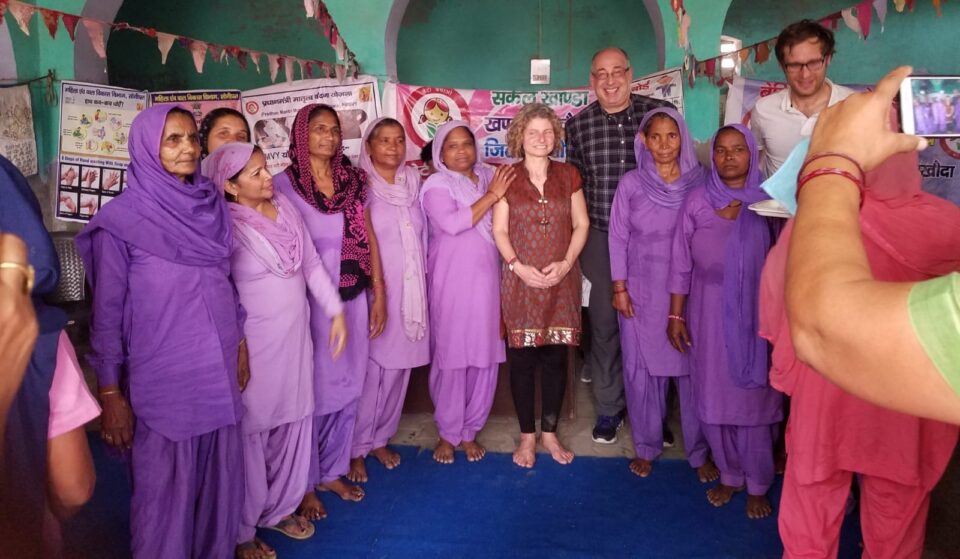BY JYOTHSNA HEGDE
Back in the early 1990s, when Dr. Venkat Narayan, Ruth and O.C. Hubert Professor of Global Health and Epidemiology at Rollins School of Public Health and a professor of medicine and endocrinology at Emory University School of Medicine, first began studying type 2 diabetes, it was considered a disease of adults in affluent countries. Today diabetes has spread globally, to both urban and rural areas, afflicting the poor and the rich, striking kids, teens as well as adults.
In January 1922, Leonard Thompson, a 14-year-old boy dying from diabetes in a Toronto hospital, became the first person to receive an injection of insulin. 2021 marked 100 years since the discovery of insulin, a ground-breaking drug in the fight against diabetes. A century of advancements in treatment, education, and prevention notwithstanding, the statistics remain grim, with Diabetes posing a major global and national health challenge in epidemic proportions, affecting more than 537 million people worldwide. The problem is especially rampant in all South Asian populations.
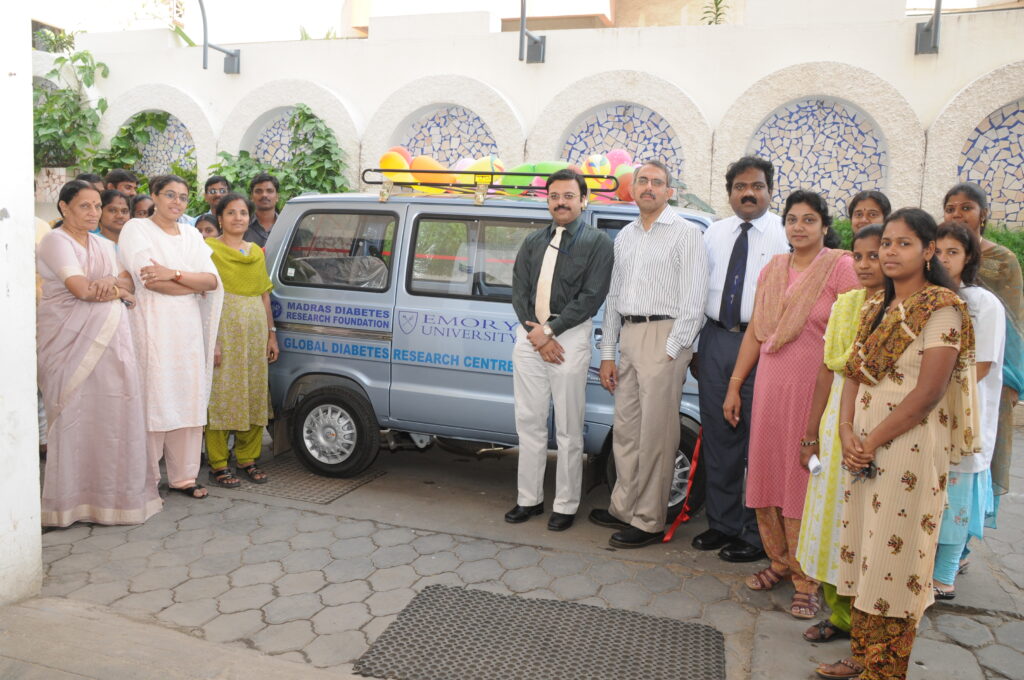
Deemed the Diabetes Capital of the World, India alone has 77 million people with diabetes, projected to grow to 125 million by 2045. “Even within the U.S., diaspora from Indian subcontinent have a higher risk of diabetes than other groups,” notes Dr. Narayan.
Building upon the critical research and work conducted by the Global Diabetes Research Center at the Rollins School of Public Health and across the campus, The Woodruff Health Sciences Center and Emory University have established the Emory Global Diabetes Research Center (EGDRC) of the Woodruff Health Sciences Center at Emory University. Under the continued leadership of executive director K.M. Venkat Narayan, MD, and co-director Mohammed K. Ali, MD, the center is expected to broaden and grow its work to lessen the burden of diabetes and related non-communicable diseases domestically and globally through research, education and outreach.
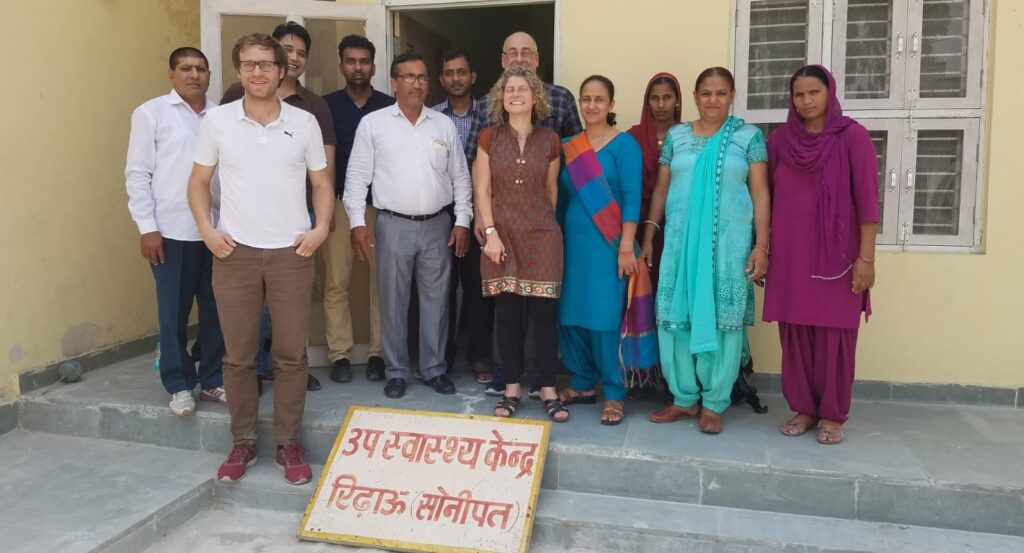
Dr. Narayan first established the Global Diabetes Research Center in 2008. With a humble beginning of just one NIH-funded diabetes researcher, the center has grown to 150 faculty members today. In the years since its founding, the center has emerged as internationally preeminent in the field of diabetes and cardiometabolic disease research. EGDRC faculty and staff members are involved in investigative collaborations in 21 countries throughout North and South America, Africa, Europe, Asia and Australia. Notably, researchers participate in 24 collaborative network sites in India alone.
Over the past decade or more, investigators from EGDRC have built substantial long-term partnerships with leading institutions and investigators in India and developed a cogent foundation for research and training in the field of diabetes and cardiometabolic diseases. This work has unraveled unique aspects of type 2 diabetes in populations from or in the Indian subcontinent and globally.
Rapid socioeconomic development and demographic changes, along with increased susceptibility for Indian individuals, have led to the explosive increase in the prevalence of diabetes in India over the past four decades. People from or living in the Indian subcontinent have unique risks for type 2 diabetes, Dr. Narayan says. The disease risk, he observes, is high even at younger ages, and even in people who are considered normal or underweight. Yet, research into diabetes in Indian populations represents less than 1% of the worldwide diabetes research. This represents a major lost scientific opportunity for discovery and context- and ethnic-specific innovations, seriously limiting advances in diabetes prevention and care for people living in or with roots in the Indian subcontinent, who comprise nearly a fourth of humanity.
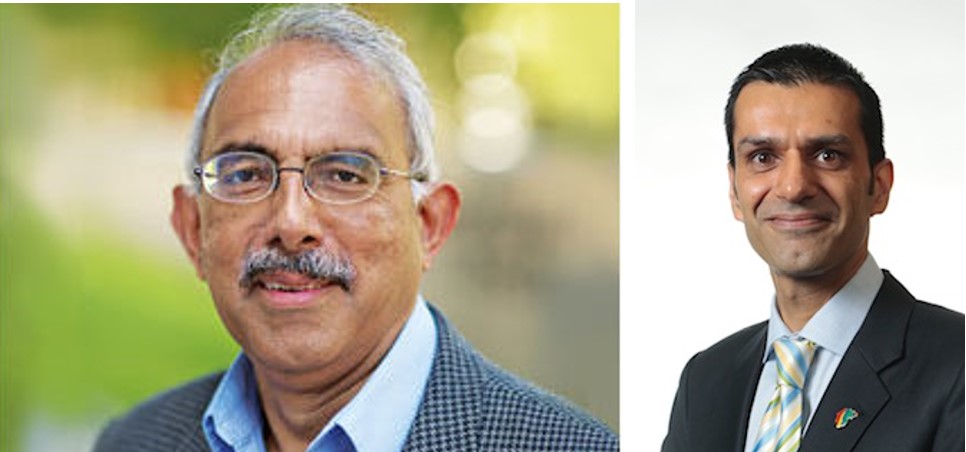
Prevention
“At EGDRC, we have several completed and on-going
research projects focused on taking the U.S. Diabetes Prevention Program (DPP)
and making it culturally appropriate, acceptable to the community, and
sustainable in South Asian people in India and the U.S., “Dr. Mary Beth Weber,
Asst Professor, Faculty, Global Health, Rollins School of Public Health says.
With research, Dr. Weber notes, DPP has been tailored to create community- and
clinic-based programs to help at-risk South Asians to successfully overcome barriers
to behavior change, eat a healthier diet (including their favorite South
Asian dishes!), move more, and help educate others about diabetes prevention. A
few potential factors that increase the risk of diabetes in the community she notes,
include people with prediabetes – blood glucose above normal but not yet in the
diabetes, being overweight or obese, having a high waist circumference
(“belly fat”), having gestational diabetes (diabetes during
pregnancy), or having a parent with diabetes. Observing that current DPPs do not work well for every type of
prediabetes, Dr. Weber says EGDRC will continue to work with community partners
to find the best ways to implement programs that work, and test out new ideas.
Diabetes mellitus, commonly referred to simply as diabetes, is a metabolic
disease that causes high blood sugar. The hormone insulin moves sugar from the
blood into the cells to be stored or used for energy. With diabetes, the body
either doesn’t make enough insulin or can’t effectively use the insulin it does
make.
Research from EGDRC and collaborators point to Indian people having an innate
deficiency in the ability to secrete insulin, with an understudied
insulin-deficient form of type 2 diabetes being the most frequent in the
population.
Emory researchers are now collaborating with partners in India and experts
across the US to establish a pancreatic biobank in Hyderabad to investigate the
fundamental reasons why Indian people may be deficient in their ability to
secrete insulin, and to explore how this may have to be addressed for
diagnostic tests, prevention, and treatment.
EGDRC has worked with Indian collaborators to spearhead the
Precision-CARRS (CArdiometabolic Risk Reduction In South-Asia) Biobank and
cohort, a massive community-based study in Delhi and Chennai of 22,000 adults
that will describe the granular natural history of diabetes and cardiometabolic
disease in South Asians and provide important insights into the prevention and
treatment of these diseases.
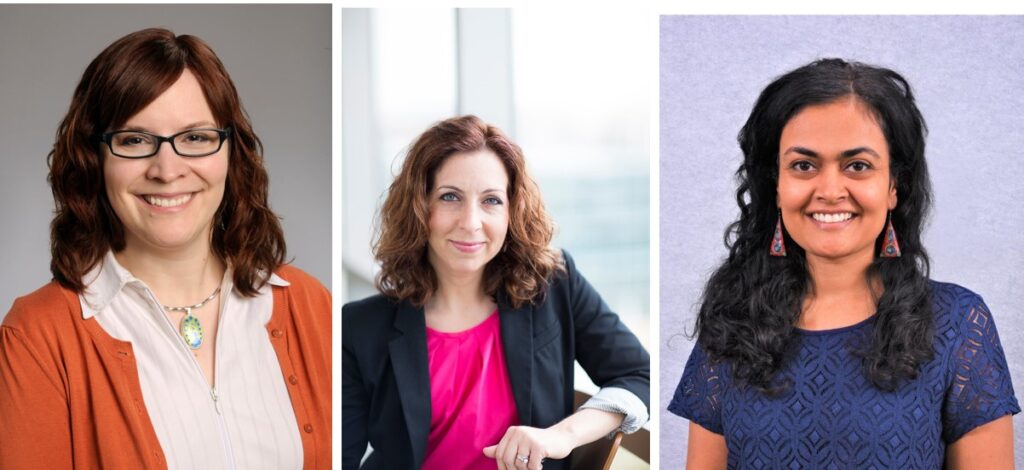
“The CARRS Cohort is a state-of-the-art, population-based cohort of South Asians to address existing and emerging questions related to cardio-metabolic disease,” notes Dr. Shivani Patel, Assistant Professor, Hubert Department of Global Health | Rollins School of Public Health, Emory University. The study, which began in 2010, has tracked over 20,000 adults in Delhi and Chennai for up to 12 years, holding interviews each year with households and individuals to monitor health events and deaths. Every couple of years, detailed laboratory biomarkers such as glucose and lipids to understand trajectories in these metabolic factors as people age, were collected. The study, Dr. Patel notes is also a shining demonstration of equitable US-India collaboration, with partnerships between Emory University, Public Health Foundation of India, All India Institute of Medical Sciences, and the Madras Diabetes Research Foundation. “Along with providing opportunities for nearly a hundred students and young scientists, the study can generate lessons that change how we prevent and treat diabetes and heart disease in this ethnic group. For example, the findings can impact guidelines for treatment and personalized / precision medicine,” she adds.
Why is the Indian populace at high risk of diabetes?
“Diabetes risk in South Asians is a complex product of multiple factors,
including genes, lifestyle, culture, socioeconomic factors and migration. The
biological tendency to have smaller body frames, lower muscle mass, and hepatic
fat accumulation may be related to nutritional conditions of previous
generations, including famine,” Dr. Lisa Staimez, Assistant Professor,
Faculty, Global Health | Rollins School of Public Health, Emory University, notes.
“Our research has identified poor pancreatic function as a critical culprit of higher diabetes risk in Asian Indians. Poor pancreatic beta cell function leads to reduced production of insulin relative to the body’s needs. These observations stand in contrast to the typical paradigm for diabetes risk, one based being overweight (i.e., high BMI) and having a swift ability to compensate for metabolic demands by working the pancreas to produce even more insulin, which works for some time, years, until the pancreatic beta cells can no longer compensate for the demands by obesity,” Dr. Staimez observes.
While most consider obesity to be factor, EGDRC research in Asian Indians and other populations globally suggest otherwise. In a comparison study of Asian Indians to an obesity-prone population (i.e., Pima Indians in the U.S. Southwest), Dr. Staimez notes, Asian Indians had marked reduction of insulin levels compared to the Pima Indians, and the Pima Indians had more obesity and insulin resistance. In another analysis of Asian Indians and African immigrants from Africa, Africans in the US, Asian Indians also had the lowest pancreatic beta cell function, despite having the lowest BMI.
Diabetes Among Indians in Atlanta
“In 2016, we established The Atlanta South Asian Health
Alliance (ASHA) to bring together South Asian community members, researchers
and clinicians to discuss diabetes in the South Asian community,” Dr. Megha
Shah, Assistant Professor, Department of Family and Preventive Medicine, Emory
University Family Physician, Emory Family Medicine, says. Through a community health
worker model, trained health coaches in the community deliver diabetes and
hypertension management program for South Asian patients. By way of this
education intervention with focus on diet, exercise, stress management, and
medication adherence, it was observed after 6 months that patients presented
better blood pressure/sugar control and weight loss.
A recently completely survey of about 1,400 Asian Indians living in Atlanta, with 60% of respondents born in the US, 35% born in India, 5% outside US or India, Dr. Shah states self-reported higher prevalence of diabetes and hypertension among those born in India vs those born in the US. The reasons she says could be several factors including diet, exercise, and stress related to immigration. “Our next steps are to develop a cohort of young Indians in India, migrants from India, and Indians born in the US to understand how 3 genetically similar groups can have such difference cardiometabolic disease profiles.”
Solutions
The EGDRC expands its multi-pronged approach to address the problem of diabetes and its associated complications through integrating innovative investigations into the causes and cures for the disease, including groundbreaking techniques to explore the root causes of the disease as well as precise ways to personalize medicine for diabetes, interventions to prevent the disease, applications of advanced technologies including artificial intelligence (AI) to improve care delivery, and public health and policy approaches for improving the quality of care and health equity.
Artificial Intelligence and Technology for Diabetes
“A ‘multi-modal’
data ecosystem that integrates data from diverse sources such as activity
wearables (e.g. FitBits), clinical sensors (e.g. continuous glucose monitors),
medical records and genetic information can enable researchers to design
innovative prevention and treatment strategies,” notes Dr. Jithin Sam Varghese,
Postdoc at Rollins School of Public Health | IIT Madras. These strategies, he
adds, may soon be used to identify individuals (personalized medicine) or
groups of individuals (precision medicine) who may receive the greatest benefit
from a particular strategy.
Speaking about adopting technology, deep learning
algorithms commonly used by Facebook, Amazon, Dr. Varghese says are used to
identify cases of diabetic retinopathy, a vision threatening disease among
patients of 2 eye care centers in India. Continuous glucose monitoring is
another technology with untapped potential, he observed, citing the observation
that patients in a Chennai-based hospital, who spend more time in low blood
sugar ranges had higher prevalence of diabetic retinopathy. Other advances
include data-driven subgrouping of newly diagnosed patients with diabetes based
on their genetics and clinical characteristics (such as age, hemoglobin A1c and
body mass index). These subgroups of patients displayed differences in how they
respond to medications, and some of these subgroups had faster rates of
developing complications, compared to others.
Studies have shown that Type 2 diabetes is a heterogeneous disease and may manifest from multiple disease pathways. The relative roles of beta‐cell function (eg, amount of insulin produced relative to the body’s needs) and insulin resistance (eg, effectiveness of insulin across the body’s tissues) may vary, and therefore, our approach to preventing or treating these problems relative to one another should acknowledge these differences.
Future research should better understand the biological mechanisms related to these impairments. Ideally, future studies will be global in nature and integrate innovations across disciplines (e.g., population, laboratory, clinical sciences), enabling powerful new technologies (e.g., multi-omics analyses, precision medicine, artificial intelligence, and single cell technologies) to inspect biological variation with better detail that will be important for the future development of new therapies and prevention strategies, especially given how much diabetes and resultant complications are growing globally.
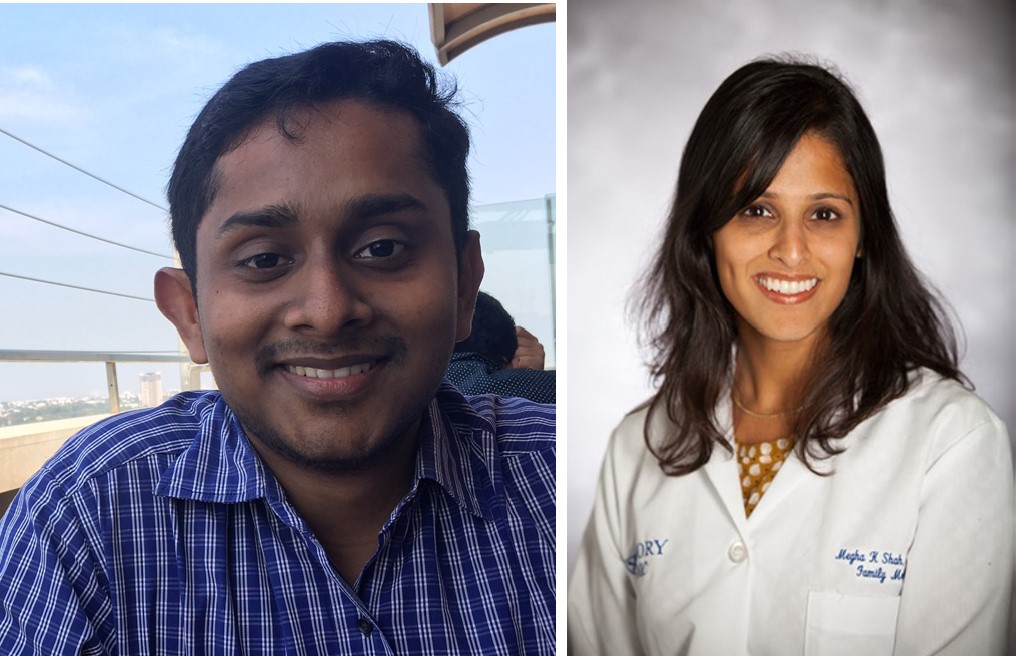
Why does it matter?
“This problem matters because of the debilitating complications that result from diabetes, including premature mortality. India, the US., and China, also have the 3 largest number of deaths from diabetes annually, with important implications on health costs to individuals and societies, as well as impacts on quality of life. For example, IDF estimates a considerable increase in global health expenditure to diabetes, from USD 232 billion in 2007 to USD 966 billion in 2021 for adults aged 20–79 years,” Dr. Staimez notes.
How does this research help?
Ideally, Dr. Staimez says, future studies will be global in nature and integrate innovations across disciplines (e.g., population, laboratory, clinical sciences), enabling powerful new technologies (e.g., multi-omics analyses, precision medicine, artificial intelligence, and single cell technologies) to inspect biological variation with better detail that will be important for the future development of new therapies and prevention strategies.
EGDRC projects, and specifically intervention trials, have been ongoing and growing since 2008. “Our trials have addressed topics of diabetes prevention, diabetes care delivery, and policies and strategies to scale/facilitate better engagement and outcomes,” says Dr. Ali. The trials he says include a mix of innovative scientific questions (things that are yet unknown) and critical implementation questions (ways to close gaps between what we know works from research and what transpires in real-life communities and clinics), advancing knowledge to evolve practice and policy. Having spanned highly resourced clinics to poor communities with limited access, every study, he adds, “has adhered to the underlying themes of improving health, doing no harm, and enhancing equity (both in the way we engage with our collaborators and offer them mutual respect and opportunities, but also in the populations we have studied).”
Drawing from Malcom Gladwell’s Tipping Point,
Dr. Ali commends the work of Dr. Narayan, describing him as the main instigator
(the “maven”), a person who knows how to inspire (the “salesman”) and connect
the right talents with the right project (the “connector”). “Each of us in the
EGDRC who have grown with it have led these projects, have subsequently used
these project platforms to grow our own portfolios – as such, he(Dr. Narayan)
has been a mentor to each of us.”
“The Emory Global Diabetes Research Center leverages Emory’s deep knowledge and
ingenuity to mount a concerted global effort against a disease that impacts
millions of adults and children worldwide,” says Ravi V. Bellamkonda, provost
and executive vice president for academic affairs. “By convening experts from across
the world to seek a cure, expand prevention and improve quality of life, Emory
is embarking on a true mission to serve humanity.”
Diabetes finds its place in antiquity through Egyptian manuscripts dating back to 1500 B.C, with Indian physicians naming it Madhumeha (‘honey urine’) because it attracted ants. The ancient Indian physician, Sushruta, and the surgeon Charaka (400–500 A.D.) were able to identify the two types, later to be named Type I and Type II diabetes. Recognized for the last three millennia, recorded history attributes the first complete descriptions in the first century A.D. to Aretaeus the Cappadocian, who coined the word diabetes (Greek, ‘siphon’). The antiquity of these early descriptions of diabetes underscores the importance of the observation and recording of medical conditions as humans evolve. In 1869, Langerhans, a 22-year-old student, in his thesis, identified the cells that were later known to be the source of insulin production. In 1923, Banting and Macleod received the Nobel Prize in Medicine, which they shared with Best and Collip. Refusal to patent insulin but to share this phenomenal therapy freely with the world will remain an outstanding example of unreserved generosity towards mankind in the history of medical disease. Banting’s colossal contribution has been globally recognized by the declaration, since 2007, of his birthday (14th November) as World Diabetes Day. (Source: NIH)
From discovery to unrecorded accounts to published knowledge, this human scourge is but a modern-day epidemic. The current and future generations of medical professionals share the responsibility of shaping this history better with discovery of better ways of prevention, cure and quality of life. Indigenous efforts from EGDRC will hopefully help in that direction.





